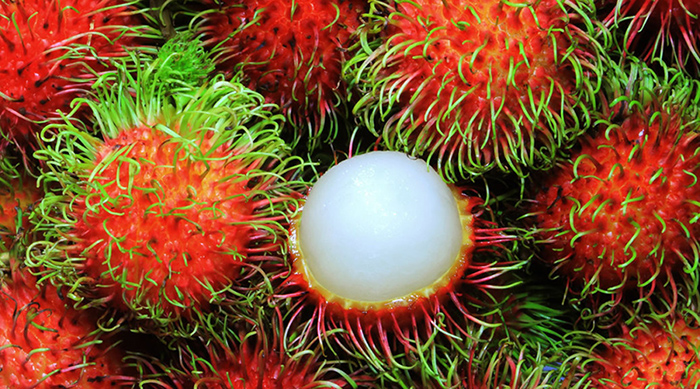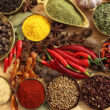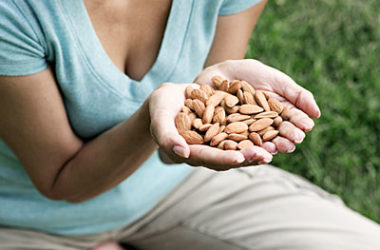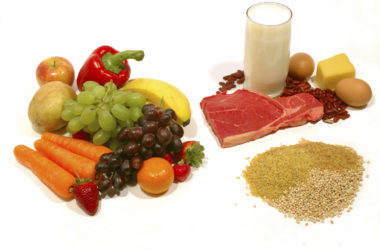The rambutan is a hairy fruit, and its looks might intimidate you. But when you overcome the fear and give rambutan a taste, you’ll love it. It is similar to grapes and lychees and very fresh. It also has a lot of nutrition and it’s very beneficial for your health.
How can a rambutan be good for your health?
A hundred grams or around three-and-a-half ounces of rambutan pulp has around forty milligrams of vitamin C. This is two-thirds of the daily value of vitamin C. This vitamin is probably the most popular of all the dietary remedies for flu and colds. Vitamin C has other uses as well. It can also help you expel toxins from your body and aid you in dealing with stressful situations. Plus, vitamin C is also great for your skin.
Rambutans also have move copper than most fruits. Copper is important for bodily functions. In fact, without copper, one might become anemic, or experience rupturing of blood vessels, and problems with bones and joints. High cholesterol and exhaustion can also be attributed to lack of copper. Copper is also good for hair growth and consuming copper can delay hair loss among other things.
Chart of rambutan nutrition facts
The facts in the chart are per one hundred grams of rambutan pulp. Also included are the absolute value amount and percent daily values for the nutrients.
| Nutrient | Amount per 100 g | % Daily Value | Comment |
| Carotene | 0 mcg | 0% | |
| Vitamin B1 (Thiamin) | 0.02 mg | 1 % | |
| Vitamin B2 (Riboflavin) | 0.06 mg | 4 % | |
| Vitamin B3 (Niacin) | 0.78 mg | 4 % | |
| Vitamin C (Ascorbic Acid) | 39.5 mg | 66 % | A wonderful source of vitamin C |
| Calcium (Ca) | 7.9 mg | 1 % | |
| Copper (Cu) | 0.18 mg | 9 % | A good source of copper compared with other fruit |
| Iron (Fe) | 0.48 mg | 3 % | |
| Magnesium (Mg) | 17.4 mg | 4 % | |
| Manganese (Mn) | 0.19 mg | 10 % | |
| Phosphorus (P) | 16.5 mg | 2 % | |
| Potassium (K) | 179.7 mg | 5 % | Not a particularly good source of potassium compared with other fruit |
| Sodium (Na) | 6.3 mg | 0 % | |
| Zinc (Zn) | 0.21 mg | 1 % |
The absolute amounts seen in the chart were averaged by healwithfood.org. The basis for the calculations were journals from 2006, and 2013.
The percent daily values were calculated by the same website, basing it on the recommended amounts for a two-thousand calorie diet. It is important to note though that daily values could vary, depending on the person’s needs.
How to Select and Eat Rambutans
Rambutans may only grow in tropical areas like Hawaii, Puerto Rico and Southeast Asia, but a lot of Asian stores in North America and Britain sell them. Those that are still on the branch are believed to possess higher culinary value and are more nutritious than those that have already been picked.
For the preservation of both flavor and nutrition, consume them raw. All you have to do is peel the skin and pop the flesh into your mouth. Just don’t bite into the seed within the flesh.
Also try the fruit in drinks and salads (peeled and pitted of course). They can good lychee replacements. Also try spicing them up with cinnamon or vanilla.













